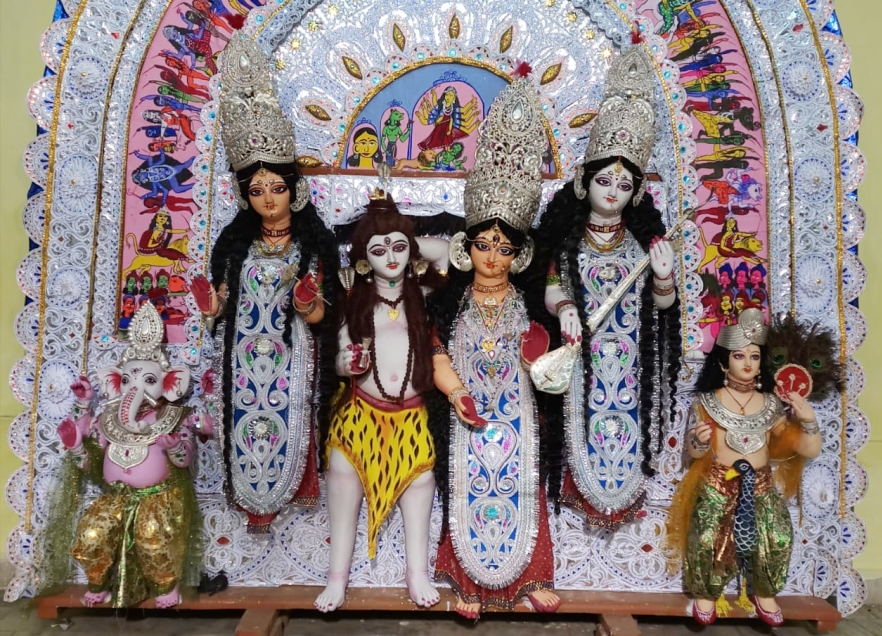Balasore: An influential family of Barabati locality in Balasore district has kept alive a 224-year old tradition of ‘Ghata puja’. The family has been worshipping Goddess Durga for 160 years. This is said to be the oldest Durga puja observed in the district. People lovingly have christened the ritual as ‘Karghara Durga puja’.
It is said that the process of worship observed by the Kar family here has its own distinct tradition and character.
Legend has it that ancestors of Kar family were from Mayapur and Burdwan in West Bengal. They were a mercantile family. Their ancestors were upset over the oppressive and tyrannical administration by Muslim subedars and Marathas and decided to shift elsewhere.
Panchanan Kar, a member of the Kara family was a resident of Sahajabad in West Bengal. In 1697 he went into maritime trade with boats and barges. He had commercial interests with Barabati locality in this town. So he took a decision to leave Bengal for good and settle down with his family in Barabati.
With time the maritime business grew with countries like Indonesia and Brahmadesh (now Myanmar). The family grew prosperous.
In 1798, the Kar family initiated the ghata puja (worshipping pitchers as representative form) of Goddess Durga at their Devibadi building in Barabati area. As time passed they became one of the most influential business families in this town.
The family spread the business interests in other areas like Soro, Bhadrak, Chandbali, Chhanua and Chatrukunta. They bought vast plots of land and soon came to be known as ‘zamidars’. The family had 20 boats and barges operating on the seas.
By 1822, the Kar family was owners of 14,500 acres of land at different places. Under their zamindari, they had 27,000 farmer tenants working for them.
The family believed that their huge business empire and massive property required protection of divine power. They decided to conduct Shakti puja. They consulted with priests and seers in this regard.
In 1822, the family bought idols of Hara, Parbati, Laxmi, Saraswati, Ganesh and Kartik – all made of brass. They started observing puja with much pomp and splendour. With the passage of time other reputed families of this town like the Debas, Das’s and Mandals joined the Kars in worshipping the deities.
In 1862, pitchers and brass idols of other deities and Goddess Durga were worshiped on the balcony of the residence of the Kar family. However, then a feud broke out between the Kar family and the others and they parted ways.
Distinct puja style
Devi Durga is worshipped as Hara-Parbati. Besides, other deities like Ganesh, Kartik, Saraswati and Laxmi are also worshiped along with Goddess Durga. The collection of soil and idol making starts on the auspicious day of Rath Yatra.
On Saptami, pitchers of water are lifted from Budhabalanga river for the puja. Seven priests (Pradhan acharya, Pustakacharya, Chandi, Hota, Japa, Tulasi and Pujak) are engaged in the water lifting exercise.
Ashtami and Sandhi Puja are observed with pomp. A total of 50kg of rice, five quintal soft wood and 20kg of ghee made out of cow milk are used during Sandhi Puja.
A new ritual has been added to those already being observed in the last few years. Women of the family now indulge in ‘sindoor khela’ (application of vermillion on the face and hair) after immersion of the idols in the river.
Usually idols of Goddess Durga are not immersed on Thursdays. The Kar family is however, different. Even if Bijaya Dashami falls on a Thursday the family goes ahead with the immersion function.
PNN
